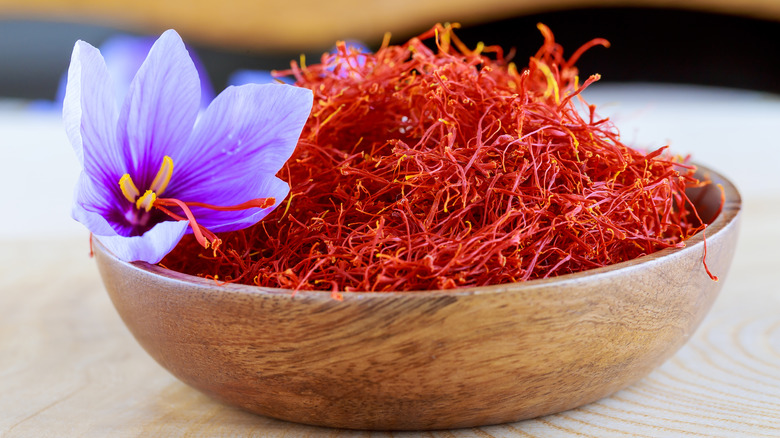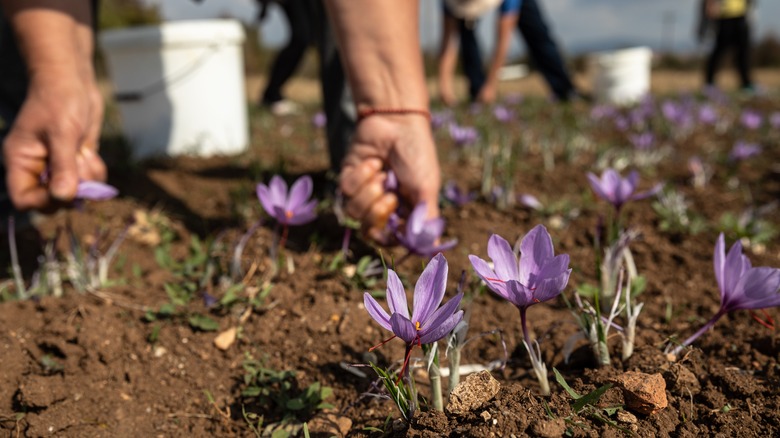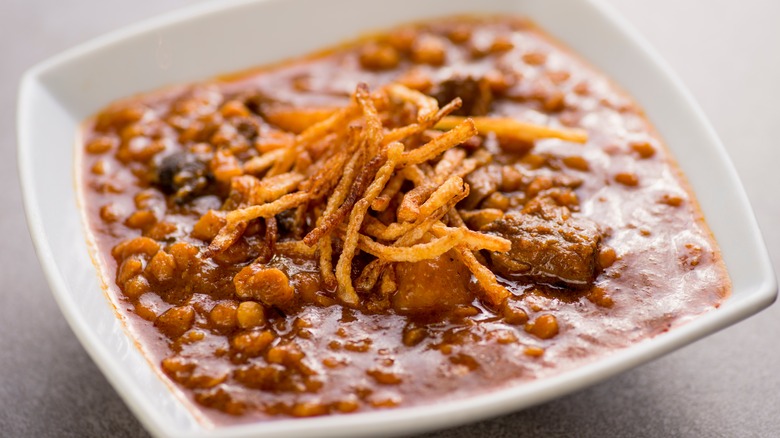Most Of The World's Saffron Comes From One Country (And It's Not India)
Saffron is the bright red stigmas of the saffron crocus, a lilac-colored flower that primarily grows in a geographical band that stretches from Spain through the Mediterranean region and into the Middle East and Asia. However, many people may know of saffron from the times they've enjoyed Indian food, which makes a lot of sense since the cuisine features the spice prominently in many dishes.
It would then stand to reason that India would be a big producer in the global saffron market. And while the country certainly contributes — the village of Pampore in Kashmir has a magical saffron harvest in particular — there is another place that is miles ahead of India when it comes to producing the spice.
Iran is actually the leading exporter of saffron. According to data from 2018, they produced 616,430 pounds. The next closest country was China at 329,776 pounds while India came in at ninth on the list with 46,423 pounds. In just two months, March to April of 2023, Iran reported exports of 24,619 pounds, and that's not even during the busy season since saffron harvesting primarily occurs in October and November. With these kinds of numbers, the odds are extremely high that most of the saffron used in the United States originated in Iran.
Saffron harvesting is a difficult, labor-intensive process
In conjunction with production numbers, it's also relevant to talk about cost of saffron since it's known as the most expensive spice in the world; in fact, just 2 pounds of the real stuff can cost upwards of $10,000. However, there are several factors that account for its hefty price tag.
Each flower has only three of the tiny particles called stigmas that create saffron, which means it takes a monumental amount of flowers to produce even a small amount of the spice; approximately 150,000 flowers are needed for 2 pounds of saffron.
Due to the delicate nature of the saffron crocus and the fact that only a small part of the flower is used to create the spice, all harvesting is done by hand, which adds to the labor cost. After the flowers are picked, the stigmata are carefully removed from the flower's center and left to dry. After the drying, they are processed and packaged for export. It's a large amount of work for such a small amount of product, exacerbated by the fact that saffron harvesting primarily occurs in the span of a month, all of which adds to the price tag.
Saffron is an essential part of many different cuisines
The cultural significance of saffron extends far beyond the cuisine of India as well; every country that cultivates and harvests the flower has a historical tradition of using the spice in their food. With Iran being the primary producer of saffron, it makes sense that many Iranian recipes use it. The national dish Chelow kebab is commonly served with saffron rice, and Iran's version of crispy rice — called tahdig — often includes the spice, as well as many popular stews that can be categorized as a khoresh.
The saffron-infused dessert zerde is another Iraqi classic that has become very popular in Turkey as well. A wide variety of pilaf dishes also are a staple of Turkish cuisine, many of which are seasoned with the spice. Saffron is also an essential element of the Spanish paella, which in turn influenced the Kapampanagan cuisine of the Philippines with their chicken saffron rice called nasing biringyi. These examples are just a sampling of the countless uses of the spice in international food traditions.



